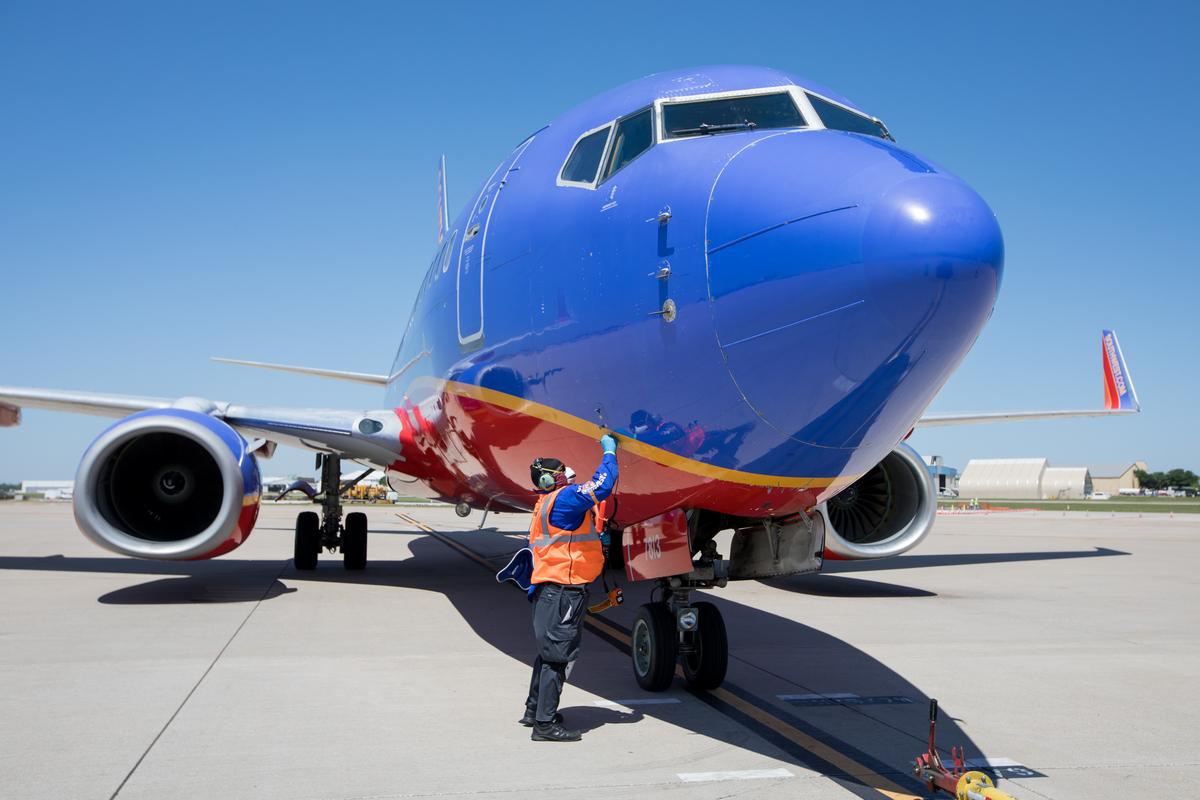
Southwest Airlines remains committed to the Boeing 737 MAX but will stretch out planned deliveries and accelerate retirements of an undetermined number of 737NGs as part of fleet changes in response to the novel coronavirus pandemic downturn.
The Dallas-based carrier has reached a deal with Boeing that will see it take “no more than” 48 MAX deliveries between now and 2022. The change removes 59 planned Boeing deliveries from the next two calendar years. Another 16 MAXs ordered from lessors remain in the carrier’s fleet plan—at least for now.
Southwest CFO Tammy Romo said that the carrier’s pre-pandemic plan had it taking delivery of 27 MAXs in 2020, assuming the grounded model wins regulatory approval to return to service. That number will now be less than 27 no matter when the MAX is cleared to fly again and deliveries resume.
The figure is notable because Southwest has 27 MAXs among the 450 in Boeing’s backlog of built but undelivered MAXs. Southwest’s revised delivery schedule means the airline will not need an aircraft from Boeing’s 737 production line—which has just restarted after a two-month pause related to the model’s grounding and build-up of undelivered aircraft—until 2021 at the earliest.
Meanwhile, Southwest is juggling its fleet in response to a drop in demand that saw April capacity fall about 60%. The carrier’s May schedule reflects a 65% decline compared to pre-COVID-19-related cuts, while June has 50% fewer available seat miles.
The reality will see fewer flights, however. Southwest is booking more seats than it needs, then pulling capacity within 4-5 days and re-booking passengers in an attempt to maximize revenue. The approach requires a flexible fleet plan. The carrier has about 250 of its 740-aircraft fleet flying reduced schedules, rotating in and out of the network to support demand as needed. Another 350 are in what passes for regular service in the current environment.
“The benefits of the short-term parking program is that the aircraft do remain part of the active fleet, and it's more cost-effective in terms of storage costs and the long-term storage program,” COO Mike Van de Ven said.
The rest of its fleet are in long-term storage: 34 MAXs delivered before the model was grounded in March 2019, and 106 737-700s. Southwest is parking the 737-700s based on airframe age and whether they need major maintenance in the near future. An unspecified number will not return, including some kept around to help cover for missing MAXs. But the size of Southwest’s fleet as well as how fast it may need to ramp up will be determined by booking trends.
"We believe lack of material traffic improvement by summer would lead to fleet downsizing, likely beginning with older aircraft currently in long-term storage,” wrote Cowen & Co. analyst Helane Becker in a research note. "We previously identified 66 aircraft we viewed as at retirement age.”
While Southwest is still finalizing its revamped delivery schedule with Boeing, it has not cancelled any of the 265 undelivered MAXs it has on firm order from Boeing or lessors.
“Our most cost-effective aircraft to fly is the MAX,” said Van De Ven, adding that Southwest’s current schedule does not include any MAX flying.
Romo added that while fuel costs are low now, they still make up the airline's second-largest operating expense category after labor.
“Having a 14% savings on fuel burn relative to the [737NG] is still very meaningful and very significant,” she said. “As always, we'll continue to do our fleet planning in a way that delivers good economics on an operating basis and also delivers low ownership costs for years and years to come.”





